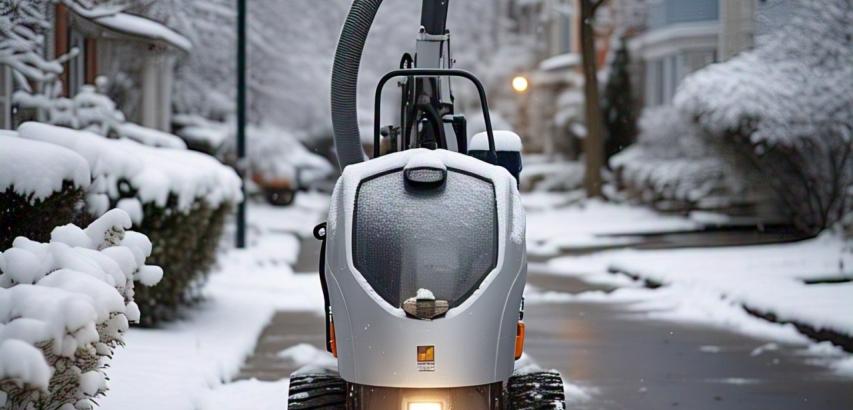A snow cleaning machine is specialized equipment designed to remove, relocate, or melt snow and ice from roads, sidewalks, parking lots, airports, and other surfaces. These machines are critical for maintaining safe mobility and infrastructure functionality during harsh winter conditions. From compact residential snow blowers to heavy-duty industrial plows, snow cleaning machines vary in size and capability to suit diverse needs.
Types of Snow Cleaning Machines
Snow Blowers:
Function: Use rotating augers to scoop snow and an impeller to discharge it through a chute.
Types:
Single-Stage: Lightweight, ideal for small areas (e.g., driveways).
Two-Stage: Heavy-duty, handles deeper snow and uneven terrain.
Power Source: Gas, electric, or battery-operated.
Snowplows:
Function: Push snow to the side using a angled blade mounted on vehicles (trucks, tractors).
Applications: Highways, airport runways, and large commercial spaces.
Blade Types: Straight, V-shaped, or adjustable-angle blades.
Snow Melters:
Function: Melt snow using heated water, gas, or electric systems.
Use Case: Urban areas with limited space for snow storage.
Capacity: Can melt thousands of tons of snow per hour.
Tracked Snow Groomers:
Function: Flatten and compact snow on ski slopes or trails.
Features: Tracks for stability, tillers to break up ice.
Walk-Behind Snow Throwers:
Compact Design: Maneuverable for sidewalks and tight spaces.
Key Components
Auger/Blade: Cuts and lifts snow.
Impeller: Propels snow away from the clearing area.
Chute: Directs snow discharge direction.
Engine/Power System: Gas, diesel, electric, or hydraulic.
Tracks/Wheels: Provide mobility on slippery surfaces.
Heating Elements: For melters or de-icing attachments.
Applications
Municipal Use: Clearing roads, bridges, and public spaces.
Residential: Driveways, walkways, and home entrances.
Aviation: Airport runways and taxiways.
Commercial: Parking lots, warehouses, and industrial sites.
Recreation: Ski resorts and winter trails.
Features & Innovations
Adjustable Speeds: For varying snow depths and conditions.
Heated Handles: Improves operator comfort.
GPS Tracking: Monitors plow routes and efficiency.
Eco-Friendly Melters: Use recycled heat or renewable energy.
Attachments: Salt spreaders, ice scrapers, or brushes.
Buying Considerations
Clearing Width: Match to the size of the area (e.g., 20" for driveways vs. 12' for highways).
Power Source: Electric for quiet operation, gas for heavy-duty tasks.
Snow Capacity: Measured in tons per hour (for melters) or throwing distance (for blowers).
Terrain Adaptability: Tracked machines for slopes, wheels for flat surfaces.
Durability: Reinforced steel blades, corrosion-resistant materials.
Challenges
Fuel Consumption: High energy demands for large machines.
Maintenance: Wear from abrasive snow and salt.
Environmental Impact: Salt runoff affecting ecosystems.
Storage: Large equipment requires dedicated space.
Leading Brands
Ariens (USA): Renowned for residential and commercial snow blowers.
BOSS Snowplow (USA): Heavy-duty plows for trucks and tractors.
Husqvarna (Sweden): Durable snow throwers with ergonomic designs.
Alpine Snow Melters (Canada): High-capacity melters for urban use.
PistenBully (Germany): Premium snow groomers for ski resorts.
Snow cleaning machines are indispensable in winter-prone regions, ensuring safe transportation, economic activity, and daily life continuity. From compact electric models for homeowners to massive melters for cities, these machines combine power, precision, and innovation to combat winter’s challenges. As climate variability increases, advancements in eco-friendly designs and smart technology will further enhance their efficiency, making snow removal faster, cleaner, and more sustainable.
From flurries to blizzards—engineered to keep the world moving! ❄️🔧
 |  |  |
